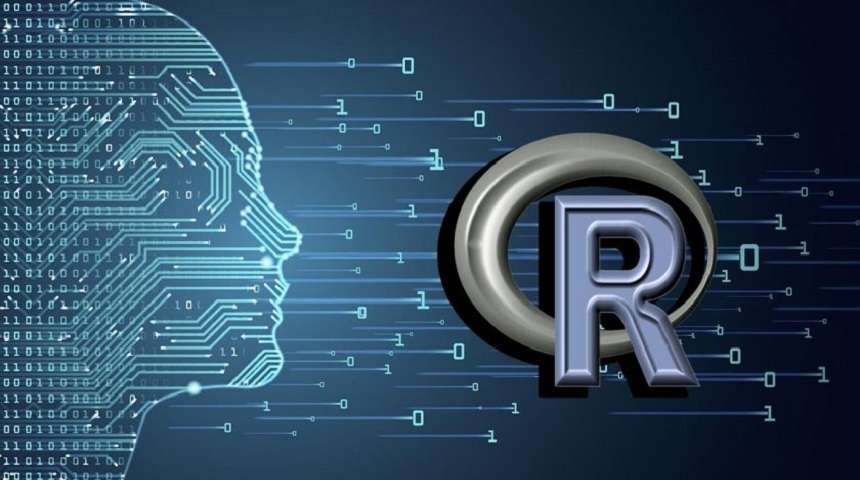Before heading towards What is R, let us read what can go with R training to your career. By learning R programming, you can accelerate your career to become:
- R Programmer
- Data Scientist
- Data Architect
- Data Analyst
- Database Administrator
- Geo Statisticians
- Data Visualization Analyst
- Quantitative Analysis with R
- Business Analyst
- Business Intelligence Expert
All of the positions listed above offer huge salaries and give you job opportunities around the world. This is because there is an extreme shortage of skilled, trained, and certified professionals in R programming.
The primary reason for learning R is to enhance your career and salary. R is considered a standard programming language for statisticians and is sometimes referred to as the ‘golden child’ of Data Science. It is the most important skill required today for all data workers.
When you look for the top skill required for the professions listed above, you will find R programming at the top of the list.
Further in this article, we will discuss what R is and what are its special features.
What is R?
According to the official homepage of R, ‘it is a language and environment for statistical computing and graphics. It is a programming language for statistical computation traditionally used by statisticians to produce graphics and statistical applications.
R offers high-level graphics interfaces to additional programming languages and debugging services. R programming is a scripting language meant for supporting different statistical analysis techniques and graphical visualizations to support data analysis. R is an open-source programming language with huge community support. There are various built-in functions and support packages available that are meant for creating an efficient R program, graphical charts, and data models.
R is rendered the most preferred language by statisticians and data scientists for analytics and research.
Applications of R
R is considered one of the latest cutting-edge tools for statistics. To solve complex issues it is used in almost every company such as Facebook, Bing, Accenture, Google, and others. It is used in almost every industry these days. R finds its applications in:
Finance
Most widely used in the finance sector by Data Scientists because it has a complete suite for carrying out required financial tasks.
Healthcare
An industry that requires to be accurate and to the point – healthcare. Some of the areas of healthcare that use R extensively are Genetics, Drug Discovery, Epidemiology, Bioinformatics, forensics, etc.
R helps in predicting and analyzing the disease and its spread as well.
Social Media
An area that produces enormous amounts of data every second. A popular R package SocialMediaMineR is capable of taking different URLs and analyzing the popularity of their reach on social media. Also, companies utilize R to generate leads for their users by analyzing the social media market.
Banking
Another area that requires a lot of attention. Banking firms utilize R for credit risk modeling and performing risk analysis. Bank of America leverages R to make financial reports.
R is used in parallel with Hadoop to accelerate the analysis of customer quality, segmentation, and retention.
E-Commerce
The industry that makes extensive use of Data Science. There are numerous applications of R in the e-commerce industry. Suggestions and recommendations are best analyzed with R; linear modeling is used to analyze purchases made; and many more.
There are many more applications of R in almost every industry, so it is difficult to end the list. Now let us move down to the section that tells you about some powerful features of R.
Features of R
R is an open-source language
R is free. Anyone can download R and begin utilizing it. R is issued under General Public Licence(GNU) and has no license restrictions. It is an open-source programming language which means that you can run it anywhere and anytime.
R is a cutting-edge tool for statistics
R is a language developed by statisticians for statisticians. It is considered as a product of ‘International Collaboration’. As an R developer, you can exchange data in MS-Excel, solve complex issues, safeguard the accuracy of code, track every computational step, make version history to be used for later reference, work for advanced statistical analysis, perform intricate visualizations, and many other tasks. R is backed by detailed, well-versed technical documentation, and the syntax and overall structure of R are specifically meant for statistical analysis.
R has cross-platform support
One of the most powerful features of R is its cross-platform compatibility. This means that you can execute R on different operating systems and different software/hardware.
So you can use it over Microsoft Windows, Macintosh, Linux/GNU, Unix, and its derivatives including Darwin, Solaris, Mac OS X, etc. it can also be executed by Mainframes.
R is Flexible
R is fully programmable and enables you to make code enhancements, automate repetitive procedures, create dynamic packages, build your own apps and info maps, and many more tasks.
R has Strong Graphical Capabilities
R has splendid graphical capabilities! It can give outstanding output in the form of scatterplots, bar plots, histograms, box plots, polygons, arrows, mathematical symbols, ggplots, arrows, trees, and others in really impressive formats.
With extended libraries that provide interactive graphic capabilities, it can let you create incredible data visualizations and data representations.
R has a Comprehensive Environment
There are more than 4800 packages in R and has a comprehensive development environment allowing you to perform statistical computing and software development more efficiently.
R is an Interpreted language
It is an interpreted language that runs the code without a compiler.
R has a sea of packages
Comprehensive R Archive Network or CRAN contains more than 10,000 different packages and extensions to help you solve all types of problems in Data Science. The packages are so versatile that they can be used for problems arising in the fields like biology, astronomy, finance, and other areas.
R has a vast community
With the increasing number of companies and people adopting R, it has made a huge community for itself. When so many people share their experience related to a common language, it becomes really helpful for novice users to learn R. You can get support from the R professionals and ask your queries that they usually solve within a few minutes.
Apart from the features listed above, there are numerous features of R that make it a favorite language of data analysts and data scientists.
Conclusion
You have come across the versatility of R and its applications. If you are willing to learn this versatile language, get yourself registered in an online training course.
This can prove to be the smartest move you can take. You get to choose from various learning modes, learn at your own pace, and also get lifetime access to the course for free. 24*7 learners’ assistance is there to help you with your queries and get job guidance as well.
Enroll Now!








